How Steep Are Ski Trails?
For years you’ve heard your well fed uncle Bill and your well boozed buddies at the pub drum up similar stories.
“Wayyy steeper than anything that you have ever skied”
“It was pretty much vertical”
“No doubt in my mind it was like 80 degrees”
These exaggerations aren’t uncommon and we’ve all tolerated listening to the big talker at the Apres’ trying to flout about his godlike steep skiing abilities. For the majority of avid skiers we are well aware that if most of this dudes stories are true than what he is depicting is a freefall down a cliff face. Unfortunately, it’s not only your average Jerry telling white lies, many world class ski resorts across the country crow over who has the steepest terrain or run in the country.
This article will equip you with the knowledge and proper tools to help you set the record straight with some simple ski science.
Table of Contents
How is Steepness Measured?
It’s actually very simple. You first divide the relative gnar by the stoke then carry the shred….. Okay maybe not. But it really isn’t that complicated.
Steepness is best measure in degrees however, it can be represented by percentages. North American resorts commonly measure trails using the relative slope angle (degrees), European resorts use relative grade (percentage) and backcountry skiers focus on the exact slope at any given point of a run. This chart below details the conversion.
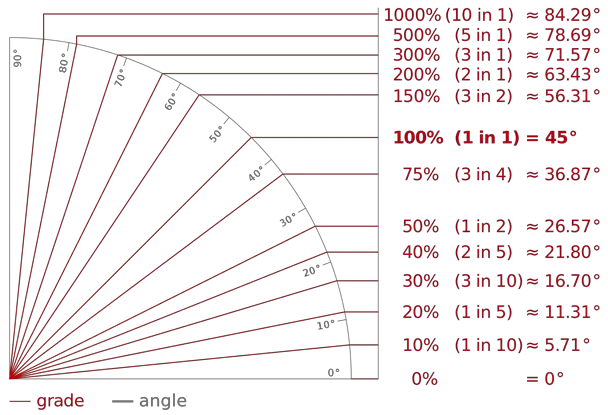
Slope Angle and Run Difficulty
To give you some context this is how slope angle roughly correlates with the runs at your local ski hill. Green circles, the easiest runs on the mountain have slope angles up to 12°, blue squares up to around 27° and black diamonds greater than 30°. Powder skiers love the 30-45° pitch and expert steep skiing junkies get thrills from steeps that are greater than 45°. Skiing is possible by Alpinists all the way up to 70-75° where it becomes impossible for your edge to have any sort of traction on the slope.
Which Measurement Is Best?
The steepness of a slope is best expressed in degrees, not percentages. This is the most widely recognized way to measure steepness of a slope across the world.
How is the Slope Angle Calculated?
Slope Angle is calculated by using some basic math involving right triangles, a lad named Pythagoras and that (tan) button on your calculator. To determine this calculation, you are going to need these 2 measurements.
- The Vertical (rise or change in elevation)
- The Horizontal Distance (Run)
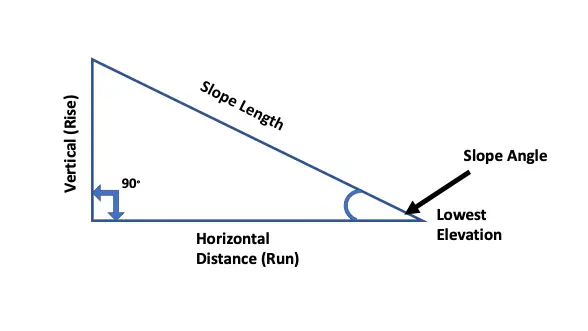
In the odd case that you are missing the rise or the run but have access to the slope length, you can seek out the help of our friend Pythagoras to help calculate the value of the missing side. This won’t be necessary in most cases as you will have access to the vertical and horizontal distance.
The formula is simple. You are going to divide the rise by the run (rise/run). This will give a decimal amount. The next step is to find the inverse tangent of this amount. This sounds complicated but it is really quite simple. Use the scientific calculator on your iPhone or google Inverse Tangent Calculator, plop your decimal into the calculator and click the tan-1 button.
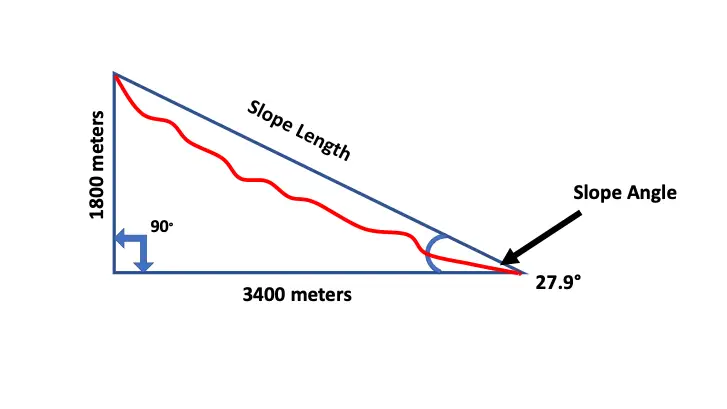
Look at the above example. The red line is the slope of the ski trail. To find 27.9 degree slope angle I divided (1800/3400) = 0.52941176 and by using the inverse tan calculator on google or (tan-1 ) button on my calculator to find the angle in degrees. It’s important to note that ski resorts usually take an average slope based on the pitch of the entire run and not of the steepest portion of the run. Hence, like the example above you would not be sure of the steepest portion of the run you just skied.
If you would like to measure the slope of the steepest portion of the run you would just simply have to draw a triangle on the line/pitch of the steepest portion, like the red arrow on the green trail of and follow the same calculation.
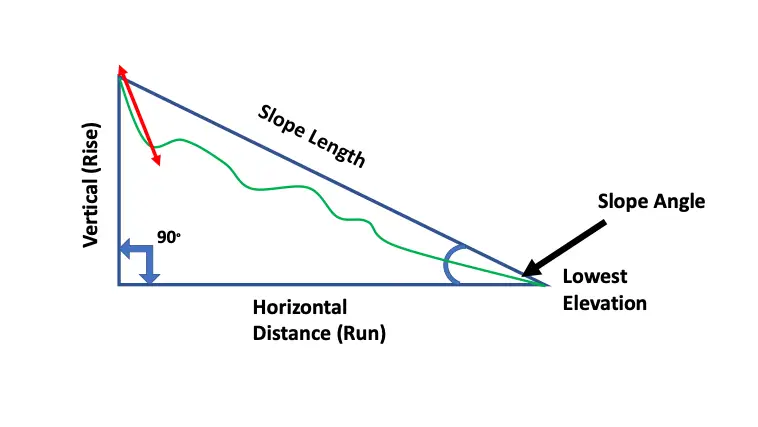
So know we know the basics of how the slope angle is measured and understand that how ski resorts use these methods to measure the average pitch of their runs.
Serious alpinist can ski 60 degree, most steep hounds are happy around 45 degrees and higher and at around 75 degrees is about the greates tilt for which your skis can stick to the slope
Why does slope matter?
Firstly, At the resort, you’ll be able to set the record straight with your buddies and be able to compare the steepness of runs for yourself from mountain to mountain.
Secondly, and most importantly the angle of slope is a crucial component of safe travel and planning while backcountry skiing. If you recall from earlier in this article I mentioned the “sweet spot” for powder skiers. This is between 30-45° which fortunately for us pow addicts is also the ideal slope angle for avalanches to be triggered. Backcountry skiers tend to stick to less steep and complex terrain when the avalanche hazard is higher and when it’s lower can access alpine areas more safely. There are many other factors to consider when travelling in backcountry terrain but understanding slope and how to measure it is an important tool.
Some Easy Ways To Determine the Slope Angle While Skiing
-
Use a Slope Meter/Clinometer
The instrument that is used to measure the angle of a slope is called a “clinometer”. Back country access makes an affordable and small one that you can keep in your pocket. By placing the devices on your ski pole down the fall line or sighting down the fall line you can get an idea of the slope.

-
Use Your iPhone
That phone in your pocket right now is likely the most exact and easiest way to measure the slope you or looking down, above, or standing on. The measure app on your iphone has a level. If you lay your pole on the snow and place your iphone on it you can get an idea of the slope angle. There are millions of apps out there that work great as a clinometer. Personally I have used theodolite and the mammut safety app and both work great for me. There are lots of different options out there so test some out and see what you like
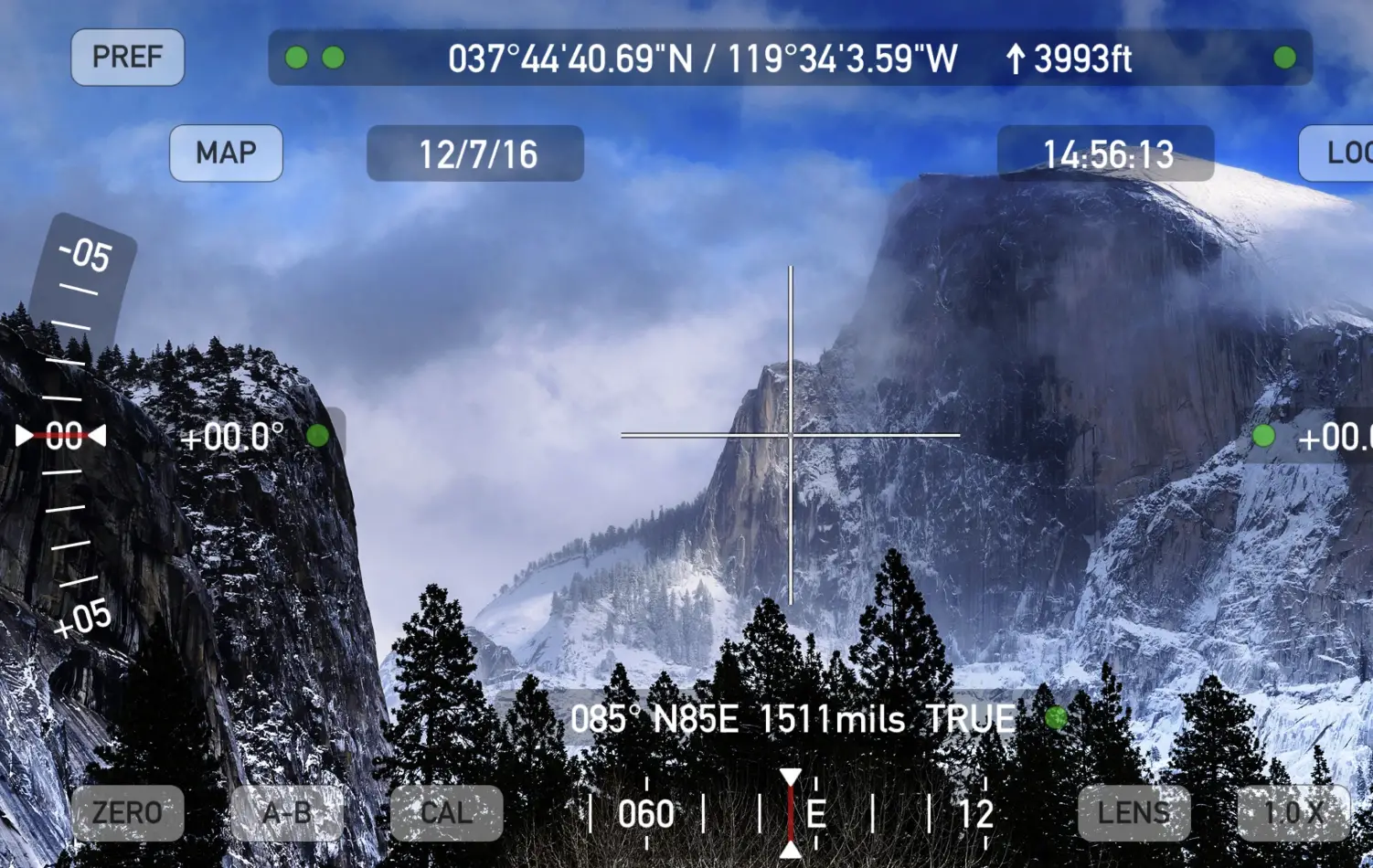
-
Use Contour Map
If you’re using a contour map to plan your adventure you can find the steepness of areas by looking at the distance between lines. The closer the lines are together the steeper the pitch. Most contour maps have a legend which details the distance between lines and the average slope angle.

There are many other tips and tricks that can help you determine what the slope angle is. Many experts are so familiar with assessing the slope of a run that they can look down it and be confident that the slope is above or below 30°. A good rule of thumb to always remember, if it looks fun, it’s probably steeper than 30°.
Go Ski Some Steeps
What are you going to do with this new-found power and knowledge of steepness?
Go ski ski some of the worlds steepest runs! Whistler Blackcomb is a great place to start. Hell, some of the best riders on the freeride world tour grew up skiing this terrain.
Whistler Blackcomb is home to the most challenging in-bounds terrain in North America. From vertical chutes to massive cliff drops Whistler Blackcomb has some insanely gnarly and notoriously challenging marked and unmarked terrain you need to check off your steep skiing bucket list.
I’ve created detail guides so you too can find and attempt the Steepest Runs on Blackcomb Mountain and the Steepest Runs on Whistler mountain.
What’s the steepest slope you have ever skied?
Let me know in the comments below.

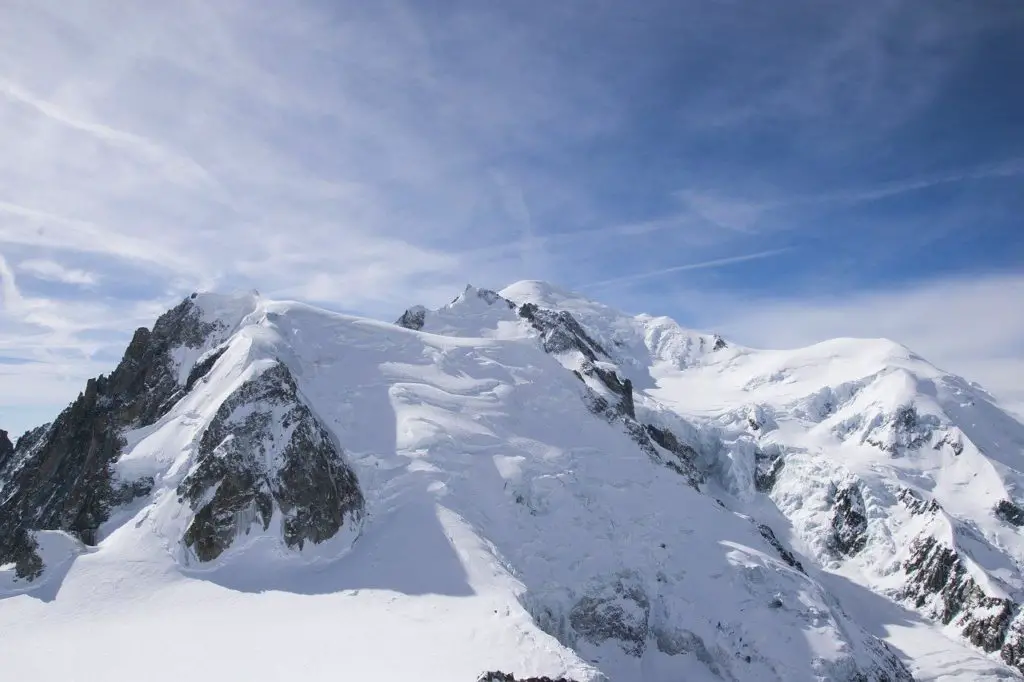
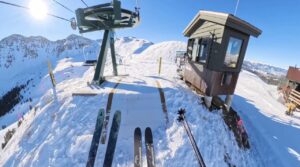




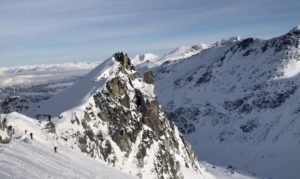
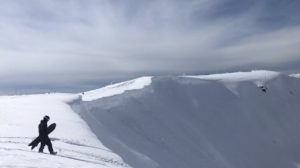
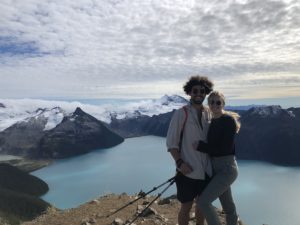

2 Responses
Great article. Easy to follow. Always wanted to know a quick way to determine how steep the run is. Any idea of the steepness for World Cup or Olympic ski competitions?
Thanks Manny! I’m not completely sure as to what the average grade is but they sometimes have portions that are steeper than 45 degrees!!